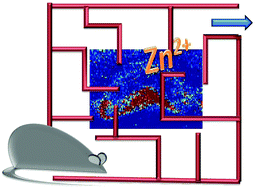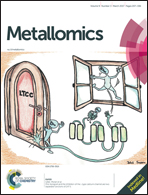Distinctive hippocampal zinc distribution patterns following stress exposure in an animal model of PTSD
Abstract
Emerging evidence suggests that zinc (Zn) deficiency is associated with depression and anxiety in both human and animal studies. The present study sought to assess whether there is an association between the magnitude of behavioral responses to stress and patterns of Zn distribution. The work has focused on one case study, the association between an animal model of posttraumatic stress disorder (PTSD) and the Zn distribution in the rat hippocampus. Behaviors were assessed with the elevated plus-maze and acoustic startle response tests 7 days later. Preset cut-off criteria classified exposed animals according to their individual behavioral responses. To further characterize the distribution of Zn that occurs in the hippocampus 8 days after the exposure, laser ablation-inductively coupled plasma-mass spectrometry (LA-ICP-MS) imaging was used. It has been found that Zn distribution in the dentate gyrus (DG) sub-region in the hippocampus is clearly more widely spread for rats that belong to the extreme behavioral response (EBR) group as compared to the control group. Comparison of the Zn concentration changes in the cornu ammonis 1 (CA1) and the DG sub-regions of the hippocampus shows that the concentration changes are statistically significantly higher in the EBR rats compared to the rats in the control and minimal behavioral response (MBR) groups. In order to understand the mechanism of stress-induced hippocampal Zn dyshomeostasis, relative quantitative analyses of metallothionein (MT), B-cell lymphoma 2 (Bcl-2) and caspase 3 immunoreactivity were performed. Significant differences in the number of caspase-ir and Bcl-2 cells were found in the hippocampal DG sub-region between the EBR group and the control and MBR groups. The results of this study demonstrate a statistically significant association between the degree of behavioral disruption resulting from stress exposure and the patterns of Zn distribution and concentration changes in the various hippocampal regions. Taken together, these findings indicate that Zn distribution patterns play an active role in the neurobiological response to predator scent stress.

- This article is part of the themed collection: Zinc in the Biosciences


 Please wait while we load your content...
Please wait while we load your content...